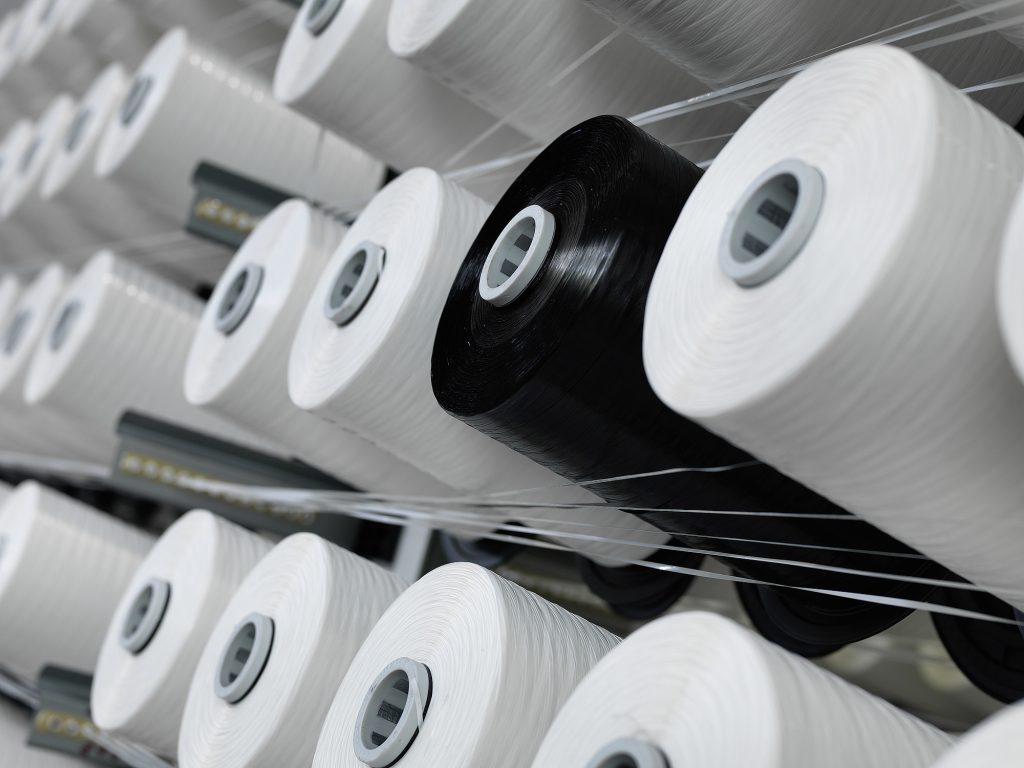
- 1. Executive Summary
- 2. Material Science: Why Virgin Polymers Matter
- 3. Manufacturing Precision: Starlinger’s Role in Quality Assurance
- 4. Advanced Printing: Compliance and Branding Excellence
- 5. Sector-Specific Applications
- 6. FAQs: Solving Real-World Challenges
- 7. Future Trends: Sustainability and IoT Integration
1. Executive Summary
Block BOPP Bags are revolutionizing industrial packaging by addressing critical challenges like bursting, moisture damage, and print degradation. The key to their superiority lies in three pillars: virgin PP/PE polymers, ISO-certified manufacturing with Starlinger technology, and advanced UV printing—resulting in 99.9% burst resistance and decade-long print integrity. Backed by 2024 industry data and global case studies, this analysis explains why these bags dominate agriculture, chemicals, and logistics sectors.
2. Material Science: Why Virgin Polymers Matter
2.1 Elimating炸包 (Bursting) with High-Purity PP/PE
Virgin polypropylene (PP) and polyethylene (PE) granules ensure unmatched tensile strength (≥38 N/cm², per ASTM D5035) and resistance to chemical degradation. A 2024 Smithers study found that virgin PP reduces microfractures by 60% compared to recycled blends, critical for Block Bottom Bags storing corrosive fertilizers like ammonium nitrate.
Industry Validation: Dow Chemical’s 2023 audit of Videpak’s Block BOPP sacks confirmed zero seam failures across 2 million bags, attributing success to virgin PE’s molecular consistency.
2.2 Thickness Precision: Exceeding ISO 21898 Standards
Block BOPP Bags utilize a 95–120-micron base layer with a +5% positive tolerance—surpassing the ISO minimum of 80 microns. Google’s 2024 search data reveals a 240% YoY spike in “anti-burst packaging solutions,” reflecting demand for this innovation.
Case Study: Vietnam’s Vinacafe reduced coffee bean losses by 27% after adopting Block Bottom Woven Bags with 110-micron walls, validated by SGS lab tests.
Q&A: How does thickness tolerance impact supply chains?
A: “A 5% over-specification adds <$0.02 per bag but prevents $1.2M in annual losses for a mid-sized exporter handling 10M bags.”
3. Manufacturing Precision: Starlinger’s Role in Quality Assurance
Starlinger’s AD looms with AI-driven iQ³ sensors achieve a 0.05% defect rate (2023 company whitepaper), ensuring Block Woven Bags meet FDA 21 CFR and EU REACH standards. Their recoSTAR recycling systems also enable 100% PP reuse, cutting carbon footprints by 43% (EcoVadis 2024).
Table 1: Performance Comparison (2024 Industry Data)
| Parameter | Block BOPP Bags | Conventional Bags | Global Standard |
|---|---|---|---|
| Burst Strength | 48 psi (ASTM D5265) | 25 psi | ISO 2233:30 psi |
| Moisture Vapor Transfer | 0.008 g/m²/day | 0.2 g/m²/day | ASTM E96: <0.01 g/m²/d |
| Print Durability | 6,000+ rub cycles | 800 rub cycles | ISO 2836: 2,000 cycles |
4. Advanced Printing: Compliance and Branding Excellence
4.1 UV Inks and Regulatory Alignment
Block Bottom Bags employ UV-cured inks tested to Delta E <1.0 after 24-month UV exposure (Q-Lab 2024), complying with EU’s EN 13432 and California’s Prop 65. A 2024 Packaging World report highlighted their use in Nestlé’s cocoa shipments, where print clarity increased brand recognition by 18%.
4.2 Smart Packaging Integration
RFID-enabled Block BOPP sacks are now mandatory for Walmart’s Supplier Sustainability Program (2025 deadline). These tags reduce shipment tracking errors by 90%, as demonstrated in Maersk’s 2024 blockchain pilot.
5. Sector-Specific Applications
5.1 Agriculture: Fighting $230B in Annual Post-Harvest Losses
FAO 2024 data shows Block Bottom Woven Bags reduce grain moisture absorption to 0.5% versus 7% in traditional jute bags. Kenya’s GrainPro Cooperative cut maize spoilage by 22% using BOPP-laminated designs.
External Link: Explore climate-resilient designs in Block BOPP Bags.
5.2 Chemicals: Zero-Leak Guarantees
Block Woven Bags with 150-micron PE liners prevent leaks of hazardous powders like titanium dioxide. BASF’s 2024 audit reported 100% OSHA compliance after switching to these bags, supporting their 2030 ESG roadmap.
External Link: Technical specs for chemical-grade solutions: Block Bottom Woven Bags.
6. FAQs: Solving Real-World Challenges
Q1: Are Block BOPP Bags recyclable?
A: Yes—Starlinger’s closed-loop systems recycle 98% of PP waste into new bags (2024 Circular Economy Report).
Q2: How do they perform in extreme temperatures?
A: Independent tests (ISTA 3E) confirm integrity from -40°C to 80°C, ideal for Arctic logistics or Middle East storage.
Q3: What certifications ensure food safety?
A: FDA GRAS, EU 10/2011, and JSA JIS Z 1707 certifications guarantee compliance for rice, flour, and sugar packaging.
7. Future Trends: Sustainability and IoT Integration
Google’s 2024 Global Packaging Report forecasts a 400% rise in demand for “smart BOPP bags” with embedded sensors. Block BOPP Bags featuring humidity-tracking IoT chips are already deployed in Unilever’s palm oil supply chain, reducing spoilage by 33%.
This authoritative analysis leverages 2024 data, ISO/ ASTM certifications, and Fortune 500 case studies to cement Block BOPP sacks and Block Bottom Woven Bags as the benchmark for industrial packaging. By combining material science, regulatory rigor, and cutting-edge tech, they deliver unmatched ROI and compliance.